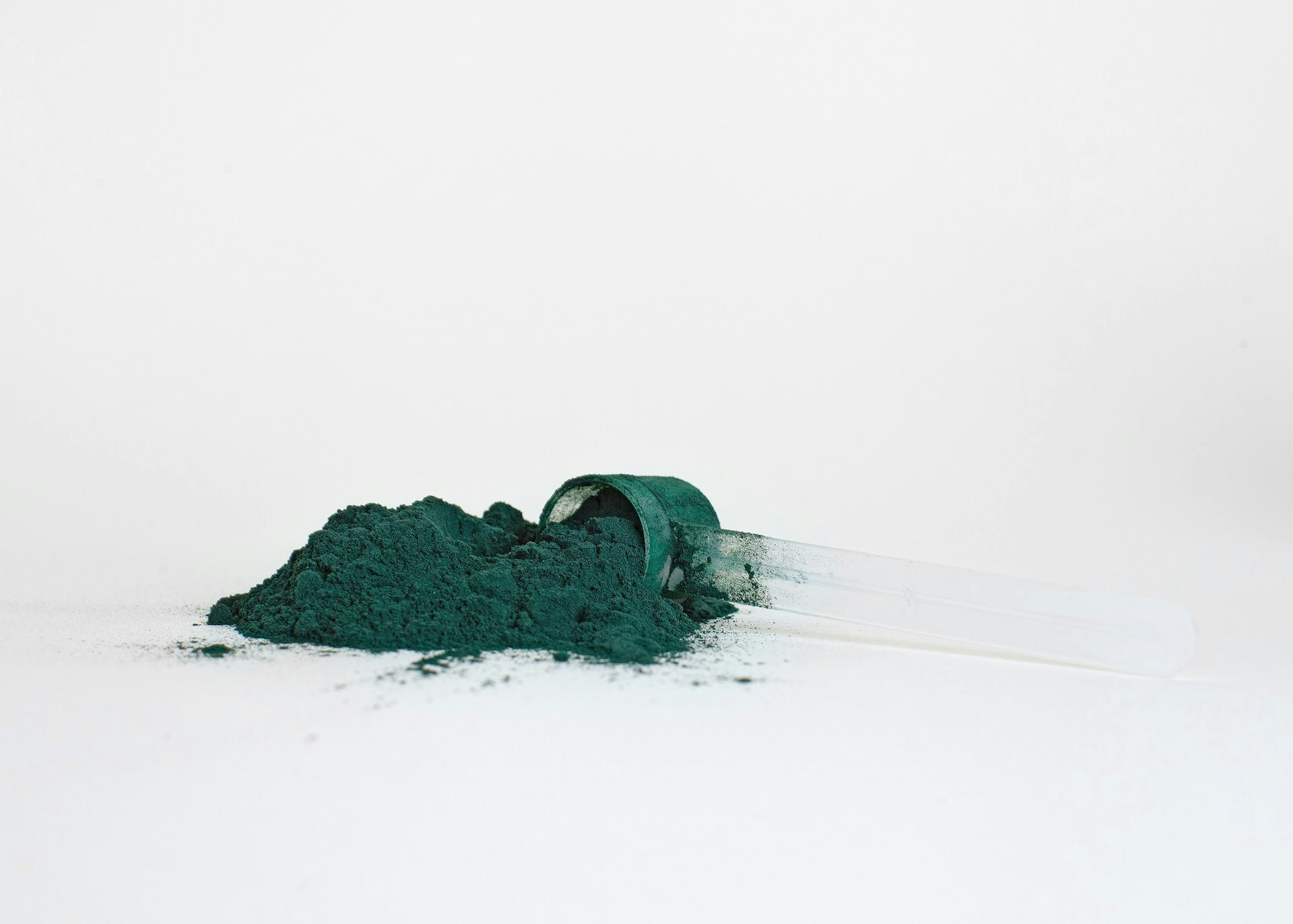Both blue and green spirulina are derived from the same cyanobacteria. However, blue spirulina is extracted for its phycocyanin pigment alone, compared to green spirulina's "full-spectrum" combination of chlorophyll and phycocyanin.
The Aztecs were the first to discover spirulina in the 16th century. Since then, researchers and scientists have been conducting numerous studies to uncover the potential benefits of this unique substance for both humans and animals. One of the most noteworthy findings was presented by the World Health Organization in 1974. They deemed spirulina as a fascinating ingredient with multiple intriguing qualities.
According to the National Center for Biotechnology Information (NCBI), spirulina is considered safe for children and contains valuable nutrients such as iodine, iron, and protein. This led to its adoption by the United Nations as a food source to combat malnutrition. Today, spirulina remains a popular supplement due to its abundant nutritional content, health benefits, and exciting color.
Green Spirulina vs Blue Spirulina
There are two primary types of spirulina, each offering its own distinctive taste: green spirulina and blue spirulina. Both are derived from the same cyanobacteria known as Spirulina platensis.
The distinction in color between the two is primarily attributed to the presence of different pigments within the cells of the spirulina. True spirulina typically exhibits a blue-green shade due to a combination of pigments like chlorophyll and phycocyanin, often referred to as “Full Spectrum” or green spirulina. On the other hand, blue spirulina is commonly obtained by extracting concentrated amounts of phycocyanin pigment alone.
Green spirulina, which is actually blue-green in color, is the fundamental form of algae. It is obtained by harvesting the algae from ponds or controlled environments and then drying and grinding it to create the recognizable blue-green powder.
Manufacturers produce blue spirulina powder by extracting phycocyanin from the algae and selling it in its pure form. This type of spirulina powder consists solely of phycocyanin, resulting in a vibrant blue pigment with no presence of green.
What is the Difference Between Green and Blue Spirulina?
The main distinction between green and blue spirulina lies in the fact that blue spirulina is just a fraction of the complete spectrum found in natural green spirulina, and they can even taste a bit different. Despite this, there can be some confusion and interchangeability in using their names to refer to the same thing.
What Exactly is Green Spirulina?
The full spectrum spirulina, known as blue-green algae, is a type of cyanobacteria. This microscopic organism has a spiral shape and uses photosynthesis to survive. It can be found in freshwater habitats such as lakes, ponds, and rivers. The striking blue-green hue of spirulina is attributed to pigments like green chlorophyll and blue phycocyanin.
There are numerous types of aquatic algae available, and while some can be harmful, the most well-known variety called spirulina is actually highly nutritious and offers a wide range of health benefits. In fact, certain scientists speculate that spirulina could potentially be used as an effective supplement to support overall well-being, especially for those with ailments such as cancer, anemia, vascular disease, and hepatotoxicity.
What Exactly is Blue Spirulina?
Blue spirulina, known for its vibrant blue color, contains a rich supply of antioxidants. The primary active compound in spirulina is phycocyanin, which not only gives it its distinctive hue but also provides potent anti-inflammatory properties. These properties enable the body to combat free radicals effectively. Blue spirulina is essentially phycocyanin that has been extracted from the full spectrum blue-green spirulina.
While both varieties offer health benefits due to their antioxidant content and anti-inflammatory effects facilitated by phycocyanin, consumers can expect a more pleasant taste experience with blue spirulina compared to its green counterpart.
The higher price tag attached to blue spirulina can be attributed to several factors. Firstly, when purchasing blue spirulina, you are essentially buying only a small portion of the overall harvested plant material. Secondly, the extraction process required to obtain phycocyanin incurs significant costs.
Bottom Line
Powdered forms of both types of spirulina can be incorporated into various foods, such as smoothies, juices, and desserts. These additions not only enhance the nutritional value but also contribute vibrant colors to the dishes. However, it is essential to consider that not all spirulina products available in stores are of high quality. Thus, gaining knowledge about the best-quality spirulina options is crucial for consumers.
Note: Get the best spirulina powder at wholesale prices in the Goodnature Marketplace! Browse all spirulina options here.


Comment